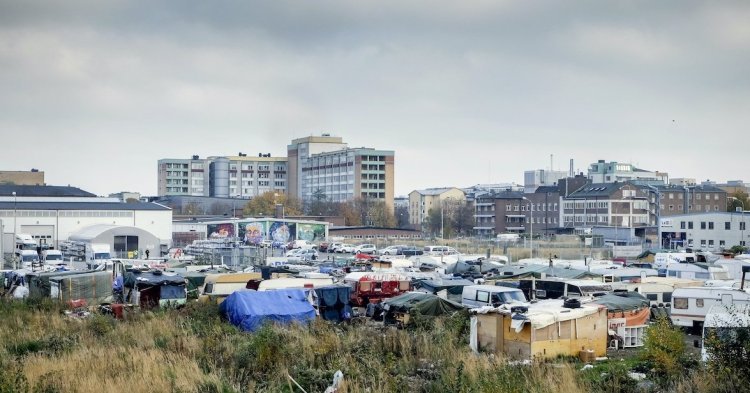Discrimination against the Roma in Europe is systemic and deeply rooted in history, so it’s difficult to completely root it out. But what does this discrimination entail in Europe? What are the issues the Roma community faces on our continent? Using the three pillars of the EU Roma strategic framework for equality, inclusion and participation for 2020 - 2030, we’ll try to give you an overview.
Equality: statelessness and discrimination
The Roma have been made second-class citizens in various ways. One of them is statelessness. Especially in the Western Balkans, many members of the Roma community have been made stateless, some even for generations. Many Roma do not have documents, such as a birth certificate, which leaves them unable to access services (e.g. healthcare or social welfare) and removes their ability to vote.
This is an issue especially in the Western Balkans, where many Roma became refugees during the 1990s war. The war wiped out many civil registries in these countries, leaving the Roma refugees with no documents to show when the Western Balkan countries became independent. However, this issue is only exacerbated by racism and discrimination by officials who often refuse to register Romani children at birth.
Discrimination and antigypsyism also permeate and constantly worsen the standing of the Roma in Europe. Centuries of discrimination, from forced assimilation under Maria Theresa in the 18th century to the Nazi concentration camps, have helped normalise antigypsyism. After 1989, Europe experienced growing violent racial animosity towards the Roma. Sometimes the violence was planned by far-right extremists, but non-extremist attacks were and still are happening. The Council of Europe’s report on Roma and Traveller’s human rights mentions “a Roma teenager [who] was beaten to death in the town of Samokov, Bulgaria, by non-Roma teenagers” in 2007. Only two years after that, an arsonist attack on a Roma family by a group of neo-Nazis injured three people, including a 2-year-old girl left with burns on more than 80% of her body.
But antigypsyism isn’t just the prerogative of far-right extremist groups: in many European countries hateful and dehumanising discourse is a reality fueled by high-level politicians. The former vice-chair of Hungary’s nationalist Jobbik party, Csanad Szegedi, talked about the Roma as a “threat to public safety” and suggested transporting them to camps. The Czech president Miloš Zeman has made remarks about the Roma as “unadaptable” in terms of social inclusion, repeating the harmful stereotype in public discourse.
The Roma aren’t equal before the law and often suffer discrimination from those who should be protecting them - like law enforcement. The Council of Europe report points out issues, such as the “mutual suspicion between police and Roma” and “troubling patterns of anti-Roma bias in the courts”.
Being a member of the Roma community in Europe also includes a greater chance of ethnic profiling and poor legal representation. Antigypsyism and stereotyping are often embedded in both the countries’ legal systems, but also law enforcement. This then leads to violence at the hands of the police appearing more often towards the Roma.
Inclusion: access to public services
The aforementioned issues with equality are interlinked with the Roma’s social inclusion in general society. In most countries, the Roma live in ghetto-like segregated areas, more often than not close to or under the poverty line, unable to afford better housing. Those who can afford better housing often encounter discrimination, with many landlords reluctant or unwilling to rent property to the Roma.
In countries, such as the Czech Republic or Slovakia, Roma children still attend segregated schools and rarely ever finish high school or university. Stereotypes and racial discrimination make it difficult and, in the case of those Roma who are stateless, nearly impossible, to find a steady full-time job.
However, the Roma also experience barriers when trying to access other public services, such as health or social care. This leads to large disparities between the Roma and non-Roma communities.
Participation: political representation and civil society
Political representation and active participation is necessary for the Roma communities to tackle discrimination, both the everyday and systemic kind. Active participation not only helps create policies which are more beneficial for tackling discrimination, but it also builds trust between the minority and the state with its institutions.
There are initiatives for improving the participation and political representation of the Roma in EU member countries (e.g. Council of Europe’s framework). However, this is easier said than done. It is one thing to recommend that Member States cooperate with Roma NGOs, but it is difficult to enforce that cooperation and make it efficient.
Conclusion
The situation of the Roma in Europe is indeed a complicated problem which can only be solved with a more holistic approach, focusing on its various interlinked issues and contexts. While this is what the EU’s Roma equality framework aims to do, it is still up to national governments to create and enforce the policies. And, given the vulnerability of the Roma community, it is questionable whether national governments have any incentives to listen to Roma civil society when implementing policies.


Follow the comments: |
|
